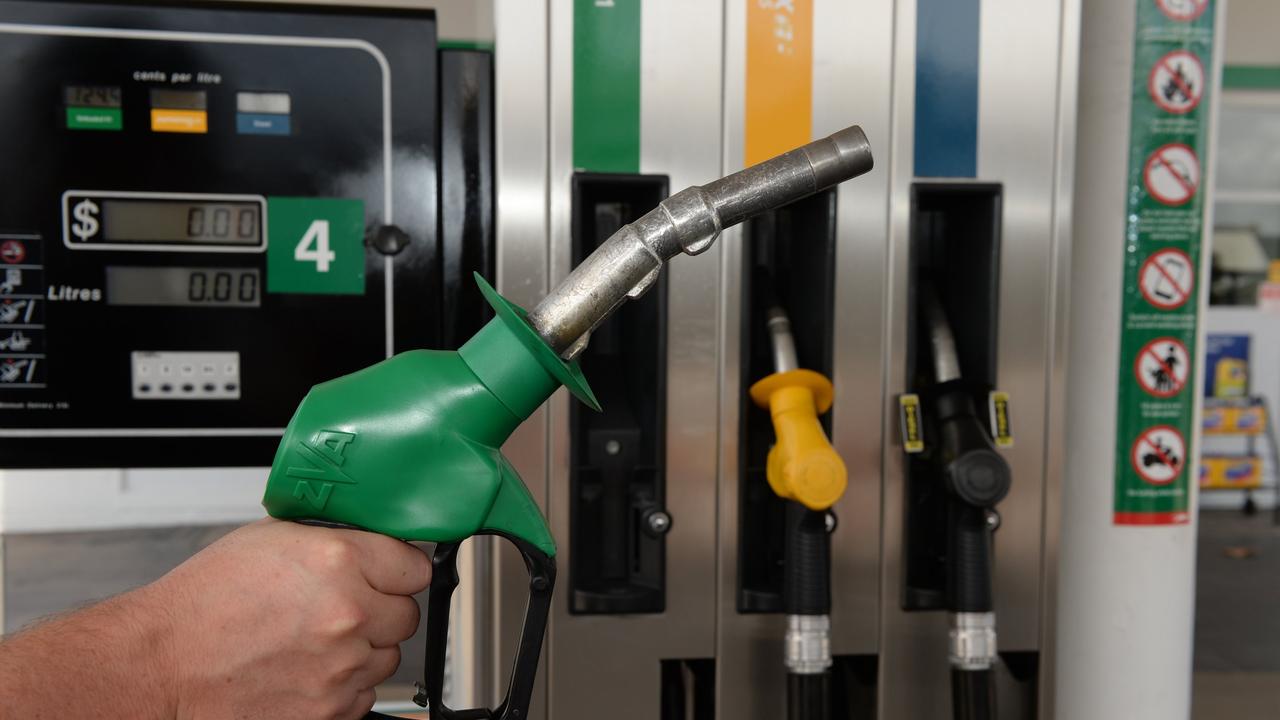Nissan Leaf v Hyundai Ioniq: Budget electric car comparison review
We put Australia’s two most affordable EVs to the test and find that being an early adopter costs a hefty premium and calls for a lot of patience.

Driving an electric car is like sailing. Quiet and environmentally friendly, they are the choice of the wealthier among us and deliver a warming sense of satisfaction.
Battery-powered vehicles give you time to reflect on such metaphors, usually while waiting for them to charge.
A 400km day trip in the two most affordable electric cars, Nissan’s Leaf and the Hyundai Ioniq Electric, needed two lengthy stops to take on electrons.
Charged in sequence, that’s about two hours to consider electric cars cost too much.
Priced from $49,990 plus on-road costs, the second-generation Leaf arrives as the world’s best-selling electric car.
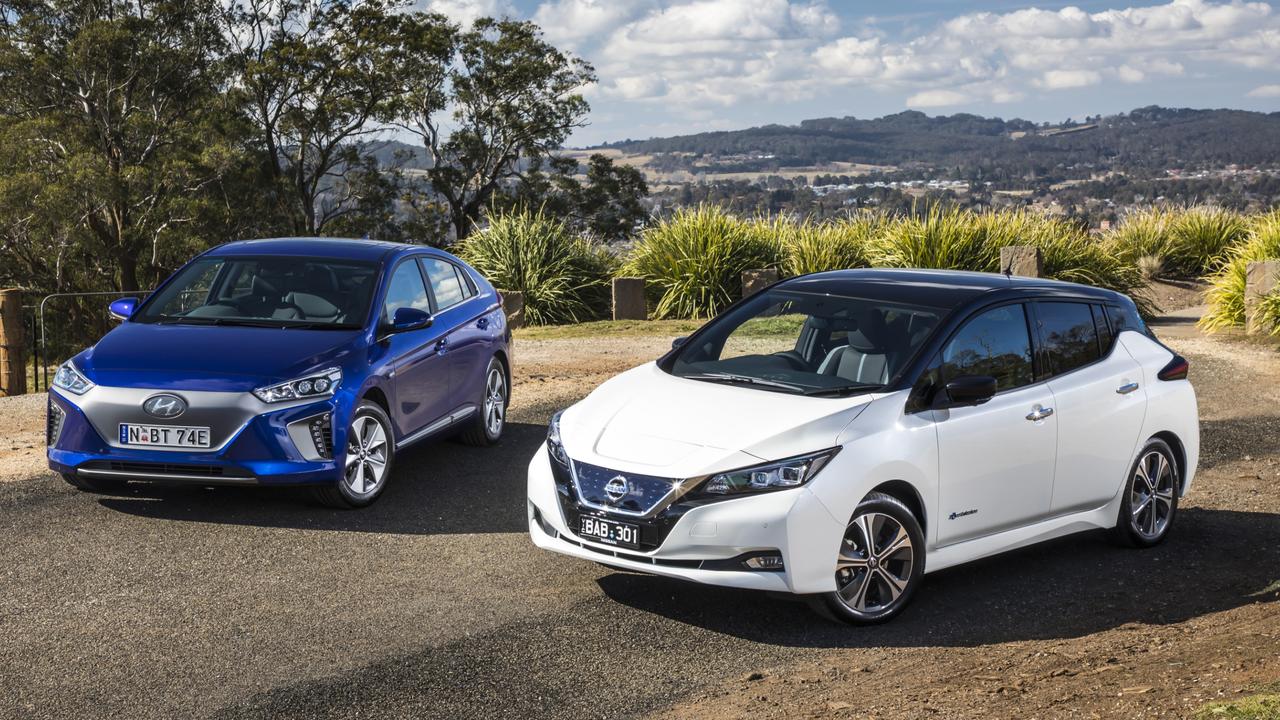
A smash hit in countries such as Norway (where there are electric vehicle subsidies), the Leaf costs about $16,500 less than a Nissan X-Trail in Oslo. But Australian customers are asked to pay $25,000 more for the Leaf than Nissan’s medium SUV.
You’ll find one Leaf in dealerships, a well-equipped version with heated leather seats, adaptive cruise control, autonomous emergency braking and eight-inch touchscreen with satnav, Apple CarPlay and Android Auto.
It drives the front wheels with a 110kW/320Nm electric motor, powered by a 40kWh battery. This is good for 315km of range, according to government testing, or a more realistic 270km in Nissan marketing material.
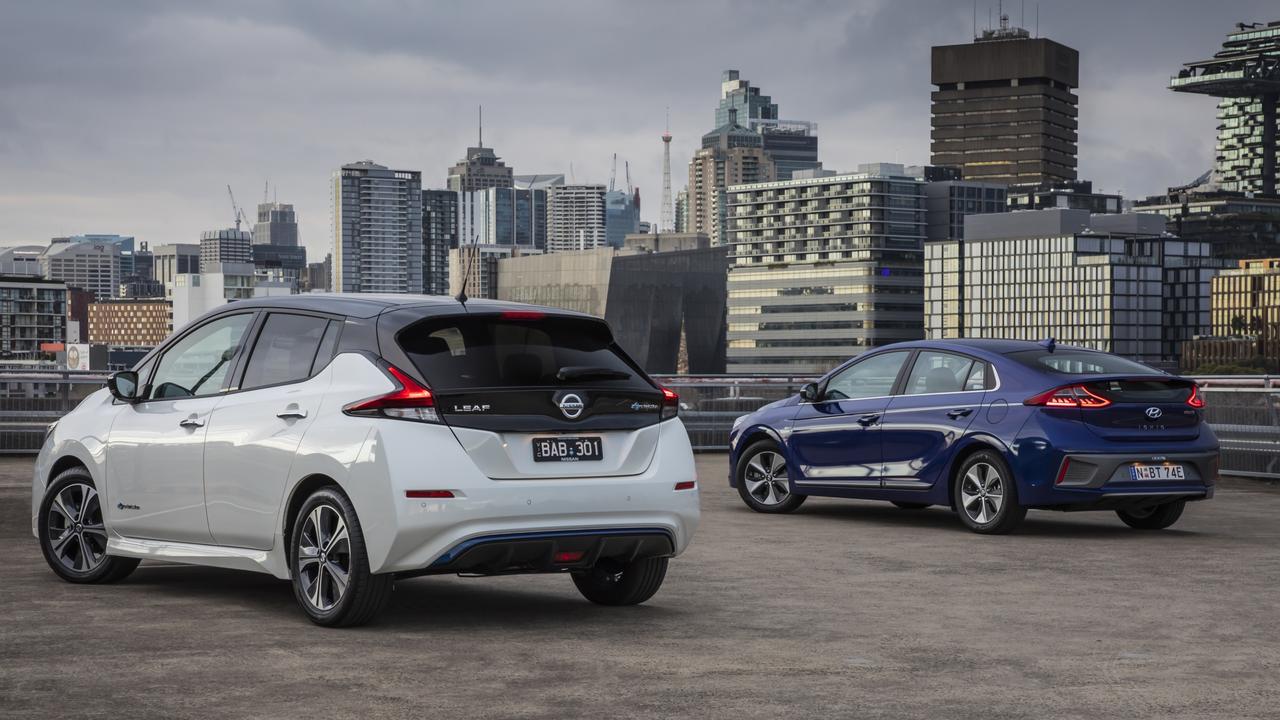
Unlike any other car, the Leaf has the potential to pump energy back to your home or the grid — it could serve as a back-up battery to keep the lights on during a blackout. This feature isn’t operational in Australia for now.
Hyundai’s Ioniq presents a family of six versions, with hybrid, plug-in hybrid and full electric power in high and low trim levels. We tested the Ionic Electric Premium, at $48,990 plus on-road costs — more than double the price of a similar-sized i30 hatchback.
As with the Leaf, the Ioniq Premium is stocked with kit including a comprehensive safety suite, heated and cooled leather seats, wireless phone charging and eight-inch touchscreen with satnav and smartphone mirroring.
Powered by an 88kW/295Nm electric motor on the front axle, the Ioniq has a smaller 28kWh battery — Hyundai claims it’s good for 230km in the real world and the government test figure is 280km.
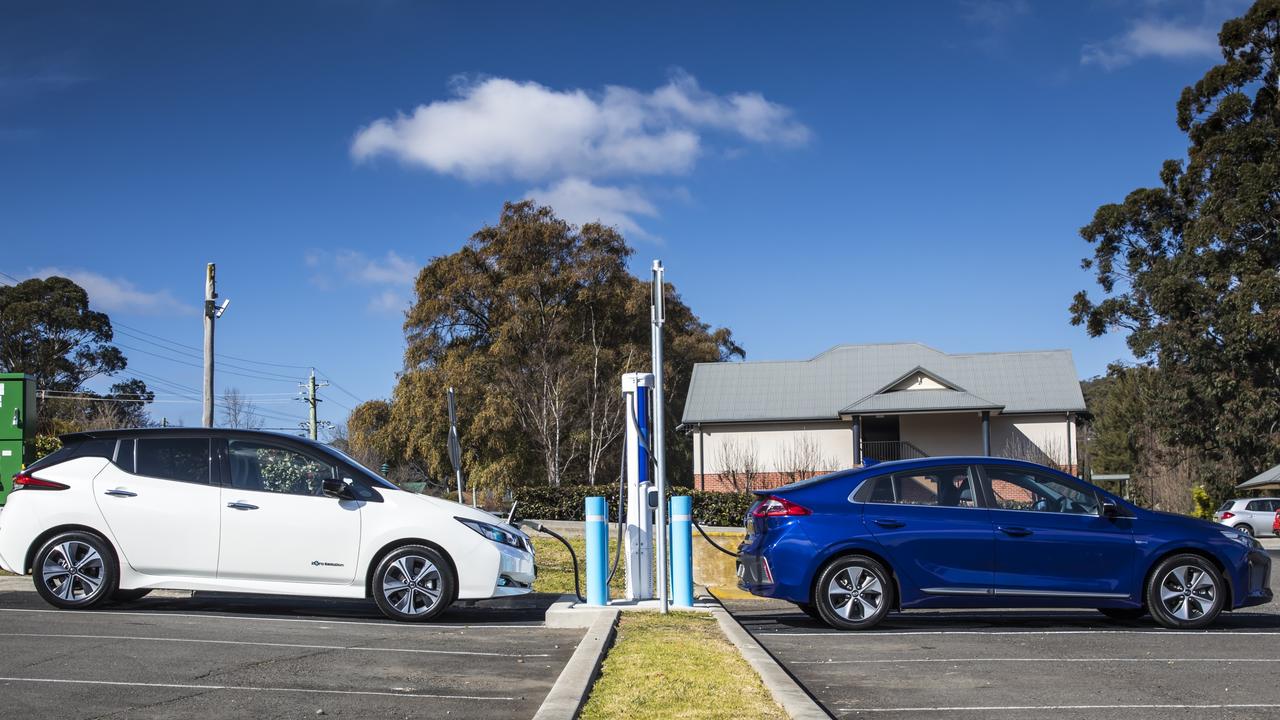
It wins points with 100kW fast-charging capability (the Leaf is limited to 50kW) and superior efficiency. The Hyundai returns official energy consumption figures of 115Wh/km compared to Nissan’s 171Wh/km, something partially attributable to its 120kg weight advantage.
Even if tailpipe emissions are non-existent in both cars, there is still a carbon dioxide measure from, for example, electricity generation. The Green Vehicle Guide reckons the Leaf’s life cycle CO2 emissions are 154 grams per kilometre, significantly greater than the more efficient Ioniq’s 104g/km. Both figures are higher than those for Toyota’s Corolla and Camry hybrids.
We tested the pair on a loop with inner-city commuting, freeway legs and country motoring.
Both have single-speed transmissions and are better suited to urban shuttles where stop-start driving keeps the battery topped up with regenerative braking.
The Leaf started the day with 240km of indicated range, then increased that to 242km after 20km of city commuting, which depleted the battery by 8 per cent.
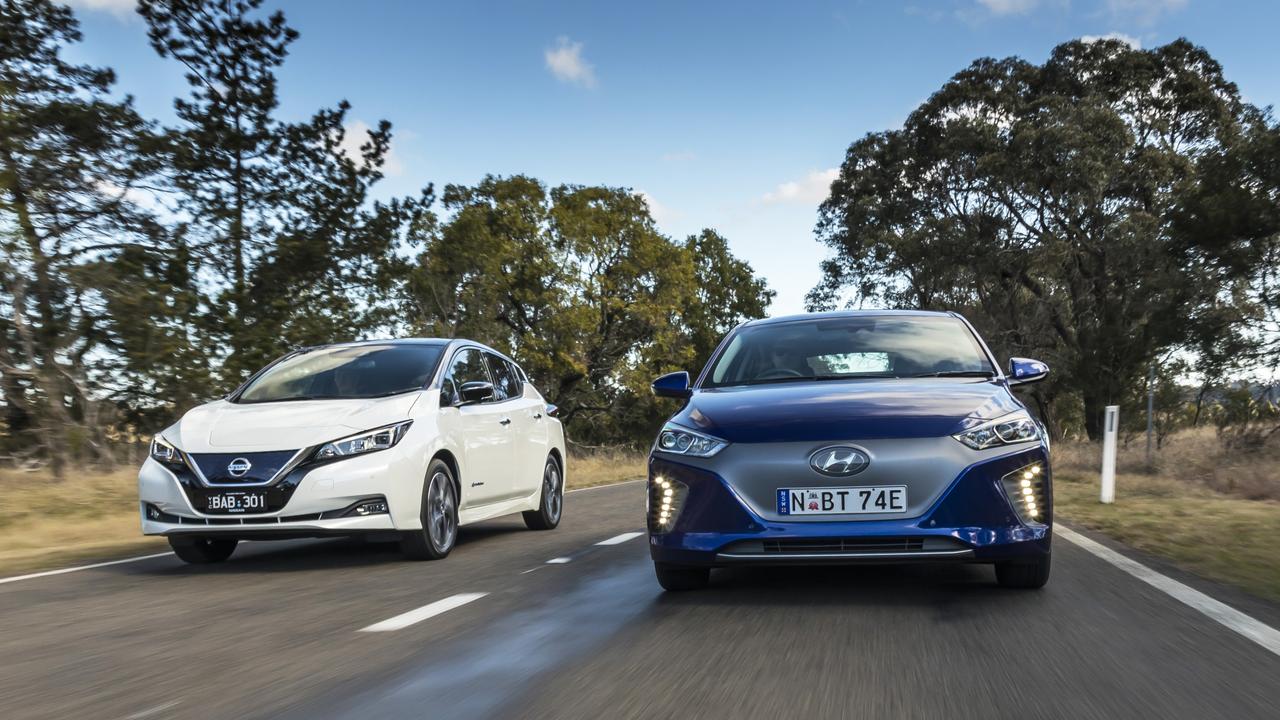
But a motorway leg totalling 65km cut 110km from the Nissan’s range. For the same leg, the Hyundai trimmed only 58km from its projected range.
After some more highway driving, we opted to recharge both cars as each had roughly 50km of range left.
Most electric cars quickly charge to 80 per cent of battery capacity before throttling back to a much slower rate to stop the hardware from overheating.
We put 80 per cent in both cars at a free NRMA fast charger south of Sydney, which took 30 minutes in the Nissan and, due to its smaller battery, 21 minutes in the Hyundai.
After a 97km test loop each returned to base with just shy of 50km remaining, although the Ioniq started the loop with 15km more range.
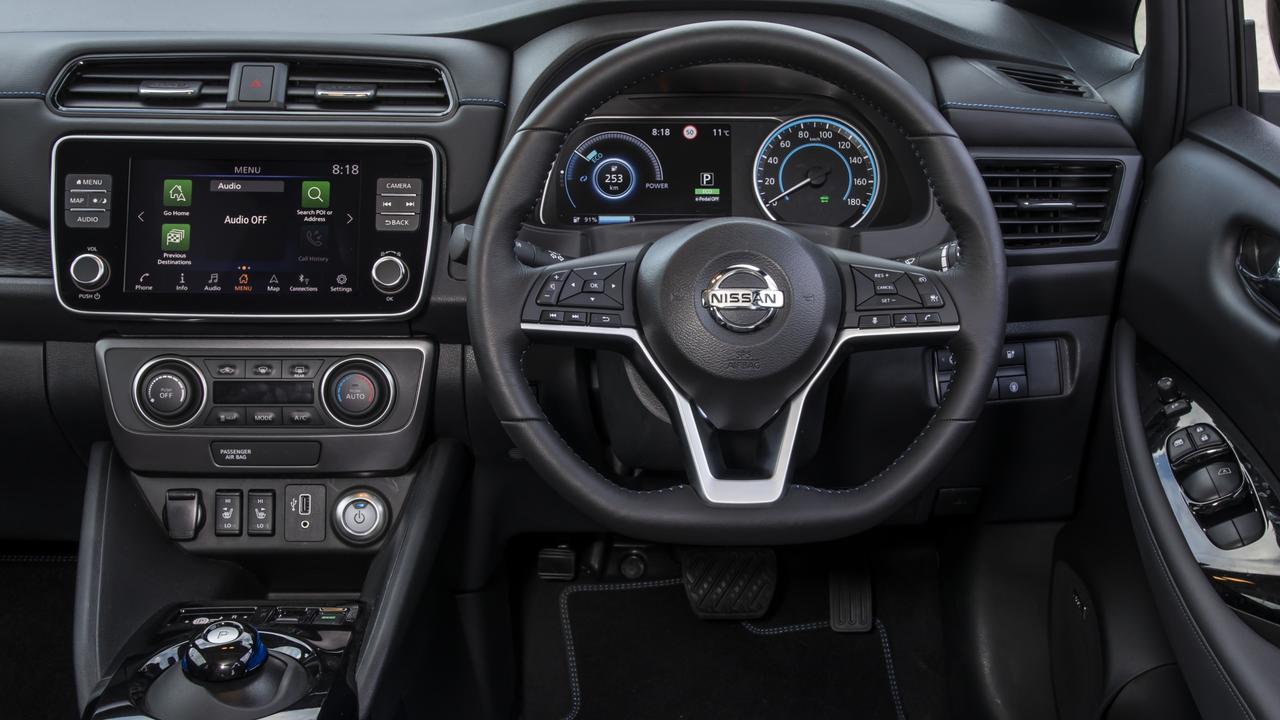
Tested back-to-back, the Leaf’s range estimate proved too optimistic in three out of four driving stints, while the Ioniq was overly optimistic in our country driving loop.
On the 104km return leg to Sydney, which included both freeway driving and city traffic, the Nissan’s indicated range dropped by 91km and the Hyundai by just 74km.
Our numbers suggest owners can expect more accurate range indications in the city than on the freeway, which means they need to exercise caution when planning trips outside the city limits.
Motorway runs in either car return an effective range of 180km-odd when charging to 80 per cent.
Tall and narrow, the Leaf has a high driving position and its low-set steering wheel has no reach adjustment. The interior doesn’t live up to the $50,000 price tag.
Skinny eco-friendly tyres squeal if you’re keen with the accelerator and squirm when cornering. It feels nervous over bumps and unsettled in the bends, with noticeable body roll when cornering.
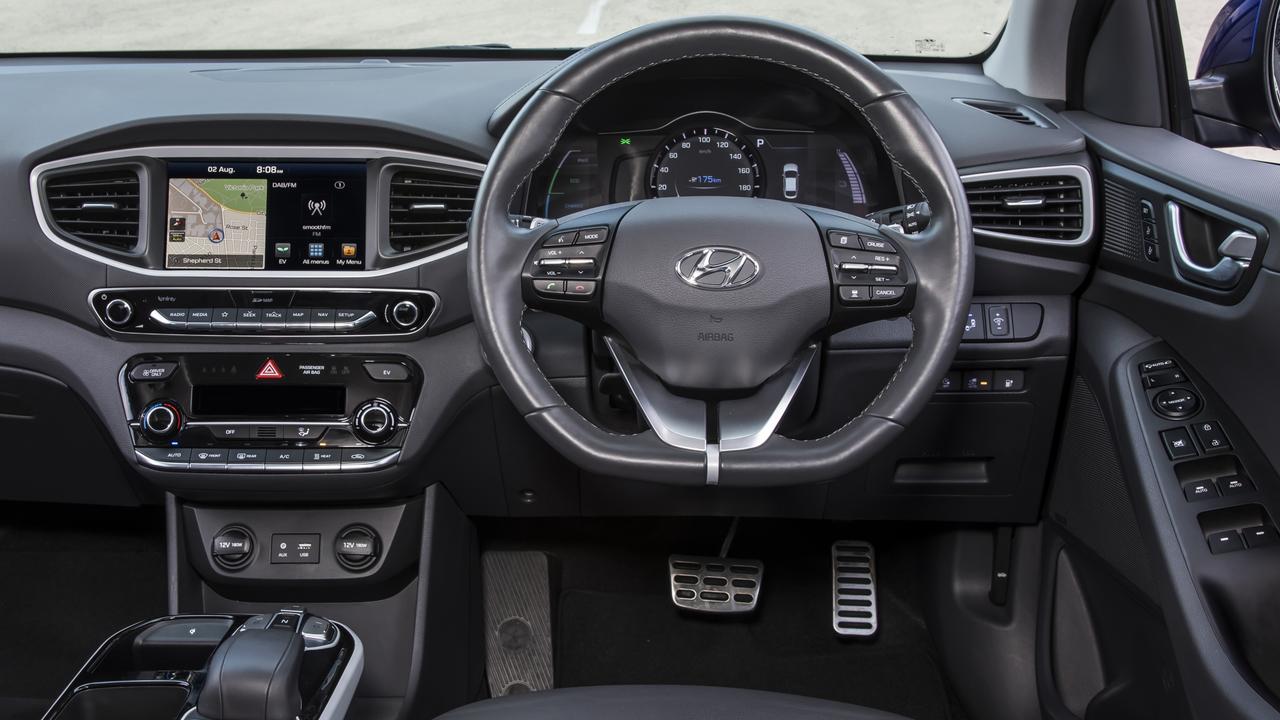
The brake pedal has a wooden feel but this can be rendered near-irrelevant by Nissan’s e-pedal. This tech encourages you to drive using only the throttle, where every lift is accompanied by strong deceleration as the battery recharges.
Hyundai’s contender is a more familiar proposition, with a more conventional cabin and a lower seating position for the driver.
It has a wide range of adjustment for the steering wheel and an electric parking brake — which feels more appropriate in a modern car than the foot-operated job in the Nissan.
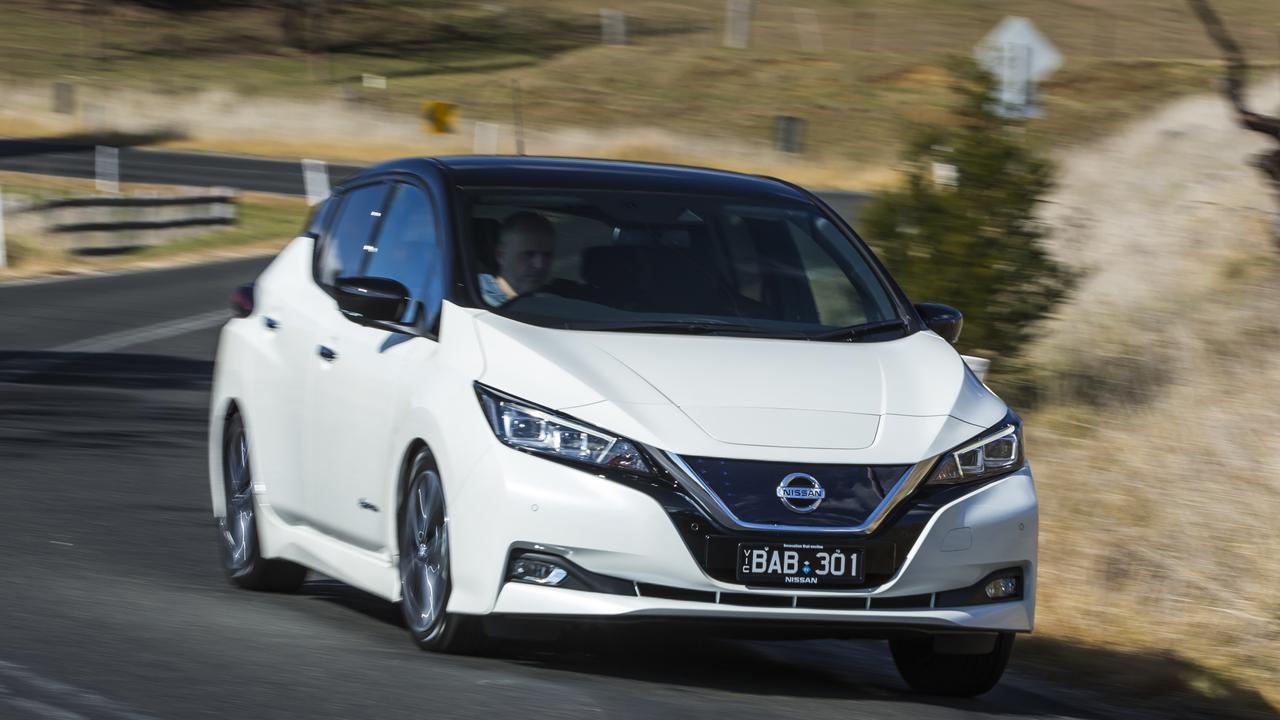
Hyundai’s push-button gear selector is an intuitive solution compared to the swivelling knob in the Leaf. The Nissan wins back points with greater storage and better headroom for rear passengers.
The Ioniq has a superior ride, more communicative steering and better traction from Michelin rubber. It feels planted on the road and the measured response from its motor makes for smoother progress.
Hyundai’s claimed 9.9 second dash from rest to 100km/h is two full seconds slower than the Nissan but the gulf doesn’t feel that wide in the real world.
Ioniq drivers can use paddle-shifters to dial up their desired level of battery regeneration.
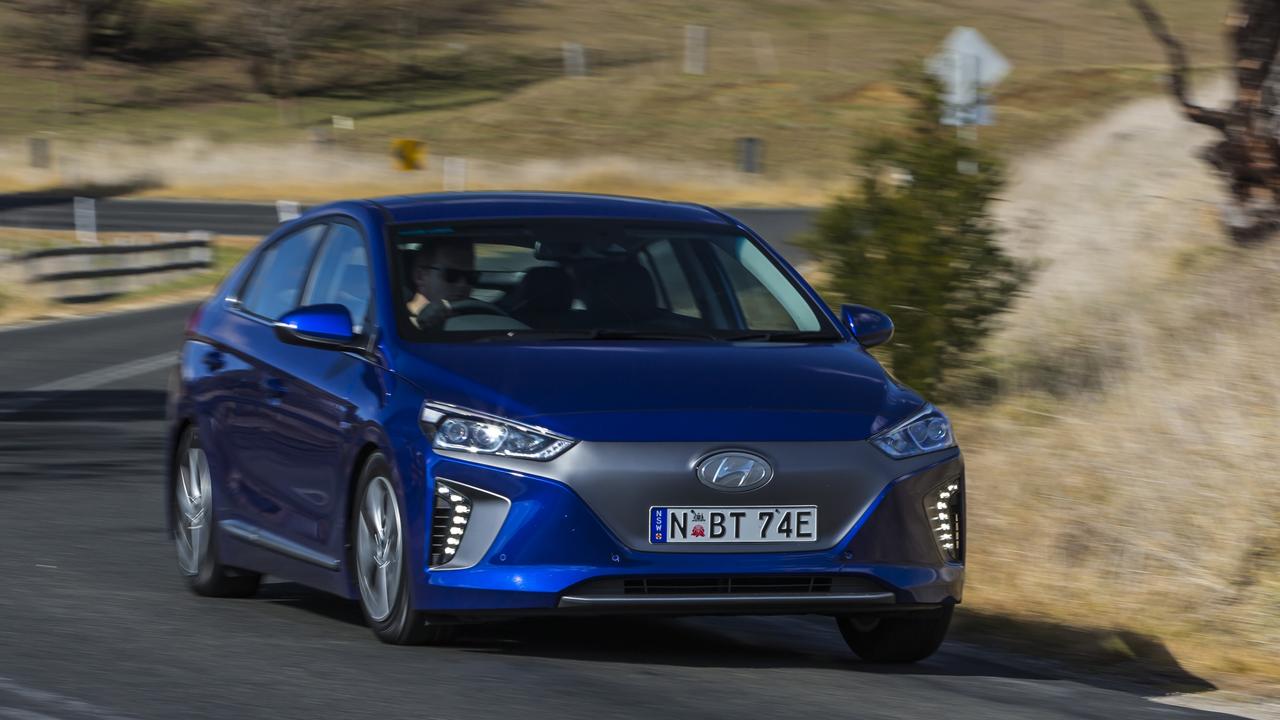
Verdict
Nissan’s electric car experience and the promise of feeding power back to the grid will be attractive to some buyers. But the Hyundai’s more accurate driving range, superior efficiency, comfortable cabin and better driving dynamics give it the win. And just as sailboats are rarely used for practical transport, a Toyota Corolla Hybrid makes more sense than either and is half the price.
Nissan Leaf vitals
Price: From $49,990 plus on-roads
Warranty/servicing: 5 years/unlimited km, plus 8 years/200,000km for battery
Motor: 110kW/320Nm, battery 40kWh
Safety: 5 stars, 6 airbags, AEB, active cruise, lane keeping assistance
Boot: 405L
Hyundai Ioniq vitals
Price: From $48,990 plus on-roads
Warranty/servicing: 5 years/unlimited km, plus 8 years/160,000km for battery
Motor: 88kW/295Nm, battery 28kWh
Safety: 5 stars, 7 airbags, AEB, active cruise, lane keeping assistance
Boot: 340L
A model for success
Committed to electric cars? Consider Tesla’s Model 3. Admittedly it is significantly more expensive than the Leaf and Ionic — from $66,000 plus on-roads — but the Tesla is superior in every way.
It’s faster and far better to drive than the Nissan or Hyundai, with substantially more range. The interior feels more upmarket and modern and the driver assistance tech is cutting edge.
Tesla’s supercharger network and a claimed 460km range makes it possible to travel between capital cities with a bit of forward planning, although that range claim is very optimistic for open road driving.
Alternatively, you could save several thousand dollars and buy a Toyota Corolla hybrid for $25,870 plus on-roads.

